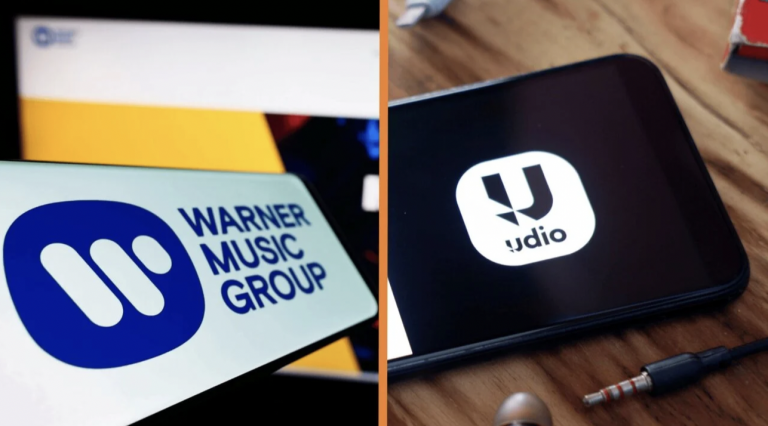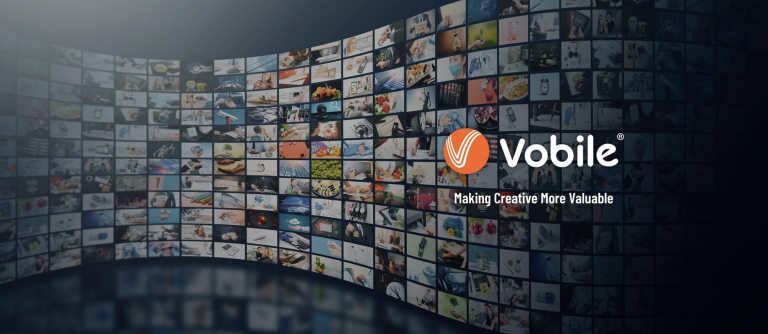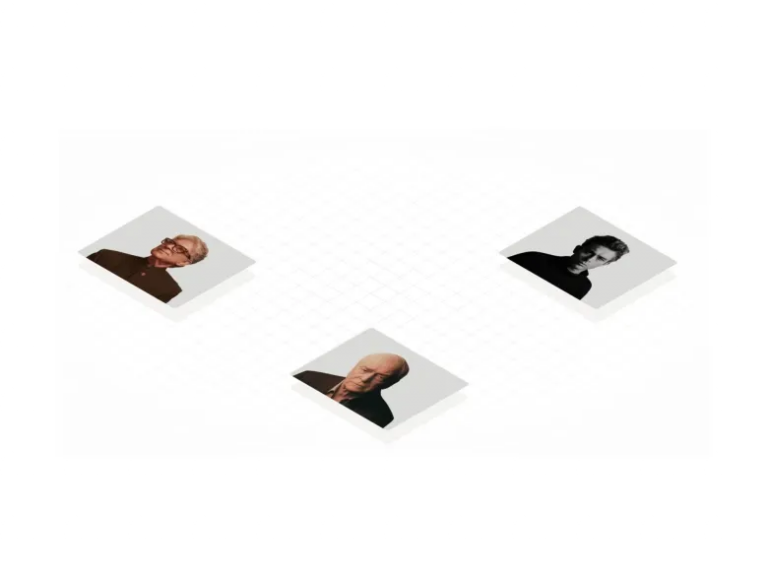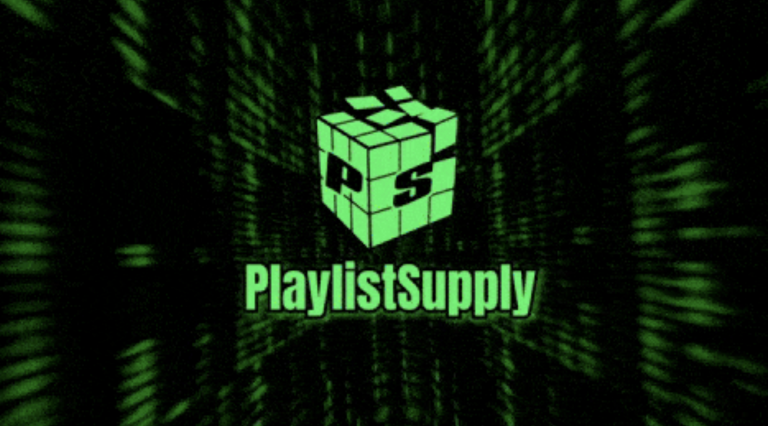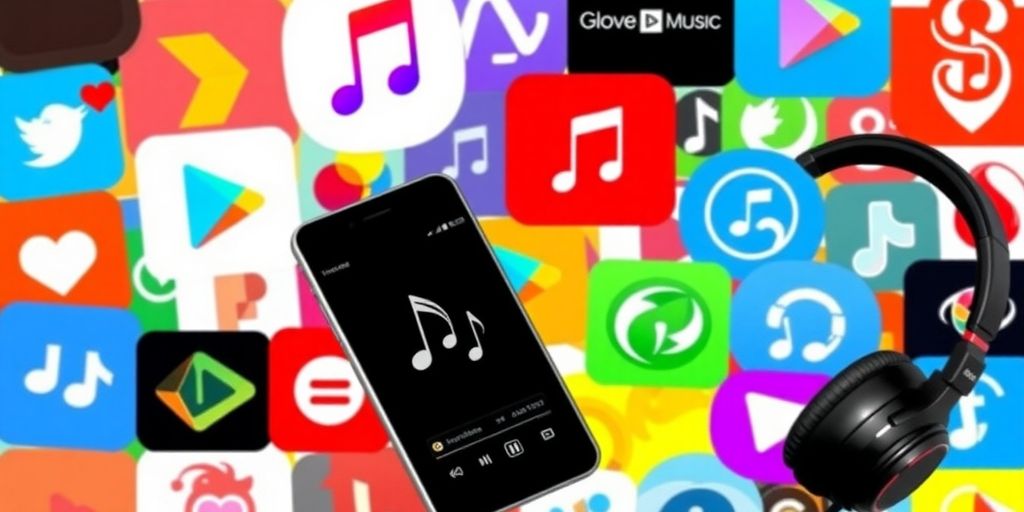
Google Play Music was once a beloved platform for music lovers, combining streaming with a music locker feature that allowed users to store and access their personal music collections. However, with its shutdown, many are left searching for suitable alternatives. This article will explore various options available for those looking to replace Google Play Music, highlighting features, user experiences, and what to expect moving forward.
Key Takeaways
- Google Play Music had a unique blend of streaming and personal library features that many users miss.
- YouTube Music is the official replacement, but it may not satisfy all former Google Play Music users.
- Spotify and Apple Music are leading alternatives, each with their own strengths and weaknesses.
- Transferring your music library can be tricky, but there are tools and methods to help.
- Niche services like Plex and Jamendo offer unique experiences for specific music needs.
Understanding Google Play Music’s Legacy

The Rise and Fall of Google Play Music
Google Play Music emerged as a contender in the digital music space, offering both streaming and a unique music locker feature. It allowed users to upload their own music libraries, supplementing the vast catalog available for streaming. This was a big deal for people who had spent years curating their personal collections. However, despite its innovative features, Google Play Music was eventually sunsetted, with YouTube Music positioned as its successor. The transition wasn’t smooth for everyone, and many users felt that YouTube Music didn’t quite capture the essence of what made Google Play Music special.
Key Features That Users Loved
Google Play Music had a few features that made it stand out:
- Music Locker: The ability to upload and stream your own music was a huge draw.
- Offline Playback: Downloading songs for offline listening was essential for many.
- Podcast Support: Integrated podcast support made it a one-stop-shop for audio entertainment.
The music locker feature was particularly important. It allowed users to combine their personal music collections with the streaming library, creating a truly personalized listening experience. This level of control and customization is something that many users miss in modern streaming services.
Impact on Music Collectors
The discontinuation of Google Play Music hit music collectors hard. Many had meticulously organized libraries within the platform, and the transition to YouTube Music didn’t always preserve that organization. While Google provided tools to transfer libraries, the process wasn’t always seamless, and some users reported losing metadata or encountering difficulties with uploaded tracks. This has led many to seek alternatives that better cater to the needs of serious music collectors. Finding a good music streaming service is important!
Popular Alternatives to Google Play Music

Google Play Music’s departure left a void, but the good news is there are plenty of options to explore. Whether you’re after a direct replacement or something completely different, the music streaming landscape has evolved quite a bit. Let’s check out some of the top contenders.
YouTube Music: The Direct Successor
YouTube Music was designed to be the heir apparent to Google Play Music. It integrates your uploaded library with YouTube’s vast music catalog. The idea is cool: you get access to official tracks, live performances, covers, and remixes all in one place. However, many users feel it hasn’t quite lived up to the expectations set by its predecessor, especially when it comes to managing personal music collections. Transferring your library was supposed to be easy, but the experience hasn’t been perfect for everyone. Still, if you’re already invested in the Google ecosystem, it’s worth a look.
Spotify: A Leading Streaming Service
Spotify is a giant in the music streaming world, and for good reason. It boasts a massive library, personalized playlists, and a user-friendly interface. While it doesn’t directly support uploading your own music library like Google Play Music did, its extensive catalog often makes up for it. You can create collaborative playlists with friends, discover new music through its algorithm, and listen on pretty much any device. Plus, Spotify offers free trials so you can test the waters before committing to a subscription. It’s a solid all-around choice for most music lovers.
Apple Music: A Strong Contender
Apple Music is another major player in the streaming game. It’s deeply integrated into the Apple ecosystem, but it’s also available on Android and other platforms. One of its strengths is the ability to upload your own music to the cloud, similar to what Google Play Music offered. This makes it a good option if you have a lot of tracks that aren’t available on streaming services. Apple Music also features curated radio stations, exclusive content, and integration with Siri. If you’re looking for a service that blends streaming with personal library management, Apple Music is worth considering.
Switching from Google Play Music can feel like a big change, but exploring these alternatives can help you find a new home for your music. Each service has its own strengths and weaknesses, so take some time to try them out and see what fits your needs best. Don’t be afraid to experiment with different platforms until you find the perfect match.
Comparing Features of Music Streaming Services
Library Size and Availability
When you’re picking a music streaming service, the size of its library is a big deal. Nobody wants to switch only to find out half their favorite obscure bands are missing! YouTube Music, Spotify, and Apple Music all boast huge catalogs, generally over 50 million songs. But it’s not just about the number. Availability varies by region due to licensing agreements. What’s available in the US might not be in Europe, and vice versa. Also, some services let you upload your own music to fill in the gaps, which is a nice bonus if you have some rare tracks. For example, Apple Music allows you to upload your own music, while YouTube Music has limited uploaded capabilities.
User Interface and Experience
Okay, let’s be real: a clunky interface can ruin the whole experience. You want something intuitive, easy to navigate, and visually appealing. Spotify is often praised for its clean design and personalized playlists. YouTube Music is… well, it’s YouTube. It’s got that YouTube feel, which some people like and others don’t. Apple Music has improved a lot over the years, but some still find it a bit cluttered. It really comes down to personal preference. Try out the free trials and see which one clicks with you.
- Spotify: Clean, intuitive, great for discovery.
- YouTube Music: Familiar if you use YouTube, good for finding live versions and covers.
- Apple Music: Integrated well with Apple devices, improving but can feel cluttered.
Pricing Models and Subscription Options
Money talks, right? Most of the big players have similar pricing: around $10 a month for an individual plan. But there are differences. Spotify and YouTube Music both have free tiers (with ads, of course). Apple Music usually doesn’t, but they sometimes offer extended free trials. Family plans are another thing to consider if you have multiple music lovers in your household. And don’t forget to check for student discounts! Here’s a quick rundown:
| Service | Individual Plan | Family Plan | Student Plan |
|---|---|---|---|
| Spotify | $9.99/month | $14.99/month | $4.99/month |
| YouTube Music | $9.99/month | $14.99/month | $4.99/month |
| Apple Music | $10.99/month | $16.99/month | $5.99/month |
It’s worth noting that pricing and availability of these plans can change, so always double-check the official websites for the most up-to-date information.
Transferring Your Music Library
Okay, so Google Play Music is gone. Now what? The big question is: how do you move all your precious tunes to a new home? It can feel like a huge task, but don’t worry, it’s doable. Let’s break down the options.
Using Official Transfer Tools
Google actually provided a transfer tool to move your stuff from Google Play Music to YouTube Music. The bad news? That window has closed. If you didn’t use it back then, your uploaded tracks are likely gone. It’s a bummer, I know. But, for future reference, these tools are usually the easiest way to go. They handle playlists, uploads, and purchases, all in one go. Keep an eye out for similar options when switching platforms in the future.
Manual Transfer Options
Alright, so the official tool is a no-go. What now? Time to get your hands dirty. This means downloading your music from Google Play Music (if you still can, using something like Google Takeout) or finding it on your computer. Then, you’ll need to upload it to your new service of choice. This can be a pain, especially if you have a huge library. Services like Astiga support various storage options, which can help.
Here’s a basic rundown:
- Find your music: Locate all your music files on your computer or external drives.
- Choose a service: Pick your new streaming service (YouTube Music, Spotify, Apple Music, etc.).
- Upload: Follow the service’s instructions for uploading your music. This might involve dragging and dropping files or using a desktop app.
I remember spending an entire weekend transferring my music library. It felt like a never-ending process of dragging and dropping files. The worst part was when I realized some of my files were missing metadata, so I had to manually add song titles and artist names. It was tedious, but totally worth it in the end to have all my music in one place.
Challenges Faced by Users
Transferring music isn’t always smooth sailing. Here are some common problems people run into:
- File compatibility: Not all services support every file type. You might need to convert some files.
- Metadata issues: Incorrect or missing song information can make your library a mess.
- Time commitment: Transferring a large library can take hours, even days.
One thing to consider is using cloud storage like Google Drive as a middle ground. You can upload your music there and then access it from different devices. It’s not ideal for streaming, but it’s a good backup option. Also, remember that background play on YouTube Music might require a paid subscription, so keep that in mind when making your choice.
Exploring Niche Music Services
Okay, so you’re not thrilled with the mainstream options? I get it. Sometimes you need something a little different, something that caters to a specific need or philosophy. Let’s check out some niche music services that might be a better fit.
Plex: A Personal Media Server
Plex is more than just a music player; it’s a full-blown media server. Think of it as your own personal, private Spotify. You host your music library on a computer or NAS device, and Plex streams it to any device with the Plex app. It’s great if you have a large collection of ripped CDs or downloaded music files and want to access them anywhere.
- Organize all your media (music, movies, TV shows) in one place.
- Stream to almost any device: phones, tablets, TVs, etc.
- Requires a server setup, which can be a bit technical.
Plex is awesome if you value ownership and control over your media. It’s not a streaming service in the traditional sense, but it gives you a ton of flexibility and customization options. Plus, no monthly fees (unless you want Plex Pass for extra features).
Astiga: Focused on Music Ownership
Astiga is a service specifically designed for people who want to upload and stream their own music. It’s a direct response to the shortcomings of services like YouTube Music, which, while replacing Google Play Music, didn’t quite satisfy those who wanted a true Google Play Music alternative. Astiga focuses on providing a clean, simple interface for managing and listening to your uploaded library. It’s all about your music, your way.
- Designed specifically for music collectors.
- Simple, uncluttered interface.
- Focus on music you own, not rented catalogs.
Jamendo: Free Music for Everyone
Jamendo is a bit different. It’s a platform for independent artists to share their music, and it’s all free for personal use. If you’re looking to discover new music and support independent creators, Jamendo is a great option. They offer licensing options for commercial use, too, which is cool. It’s a win-win for artists and listeners.
- Focuses on independent music.
- Free for personal use.
- Supports independent artists directly.
Here’s a quick comparison of these niche services:
| Feature | Plex | Astiga | Jamendo |
|---|---|---|---|
| Music Source | Your own files | Your own files | Independent artists’ music |
| Streaming | Your own server | Astiga’s servers | Jamendo’s servers |
| Cost | Free (Plex Pass for extra features) | Subscription based | Free (licensing for commercial use) |
| Best For | Media hoarders | Music collectors | Discovering independent music |
Community Feedback on Alternatives
User Experiences with YouTube Music
Okay, so YouTube Music. It’s the obvious successor, right? But what do people really think? A lot of users seem to have a love-hate relationship with it. Some appreciate the integration with YouTube’s massive library, making it easy to find live performances and covers you won’t find anywhere else. Others? Not so much. The interface can be clunky, and the way it mixes official music with user-uploaded content can be frustrating. Many miss the simple, straightforward nature of Google Play Music.
- The algorithm is hit or miss. Sometimes it nails your taste, other times it’s completely off.
- Offline downloads can be a pain to manage.
- The lack of gapless playback drives some people nuts.
I switched to YouTube Music when Google Play Music shut down, and honestly, it’s been a mixed bag. The music selection is great, but the app feels like it’s trying to do too much. I just want to listen to my music without all the extra stuff.
Comparative Reviews from Music Lovers
When you start digging into reviews, you see a pretty clear picture. Spotify is often praised for its user-friendly interface and extensive playlist options. Apple Music gets points for its integration with the Apple ecosystem and lossless audio quality. Then there’s the musicboard platform, which is great for discovering new music. But each has its drawbacks. Spotify’s free tier is ad-heavy, Apple Music can feel a bit closed off, and some find other services lacking in niche genres. Here’s a quick comparison based on user reviews:
| Feature | YouTube Music | Spotify | Apple Music |
|---|---|---|---|
| User Interface | Okay | Great | Good |
| Music Discovery | Good | Great | Okay |
| Offline Playback | Okay | Great | Great |
| Audio Quality | Good | Good | Great |
Suggestions from Former Google Play Music Users
What do people who really loved Google Play Music want? A lot of them are looking for services that let them upload and manage their own music libraries. They want control over their music, not just access to a streaming catalog. Here are some common requests:
- Better organization tools for uploaded music.
- More flexible storage options.
- A simpler, less cluttered interface.
Some users have even started exploring options like Plex or Astiga, which focus on cloud music storage and personal music collections. It shows that there’s still a demand for services that cater to music ownership, not just streaming. People want a Google Play Music alternative that truly understands what made it special.
Future of Music Streaming Post-Google Play Music
Trends in Music Consumption
The way we listen to music is always changing. It used to be all about buying albums, then downloading songs became popular. Now, streaming is king, but even that’s evolving. Expect to see more personalized playlists and AI-driven music discovery. People want music that fits their mood and activities, and services are getting better at providing that. Also, think about the rise of short-form audio, like music snippets on TikTok – that influences how people discover new artists and songs.
The Role of Independent Artists
Independent artists are becoming a bigger deal. Streaming services are giving them more ways to connect with fans directly, without needing a big record label. This levels the playing field and lets more diverse voices be heard.
- More platforms are offering direct upload options.
- There’s a rise in subscription models that directly support artists.
- Independent artists are using social media to build communities.
Evolving User Expectations
Users want more from their music services than just a big library. They expect better sound quality, offline listening options, and ways to share music with friends. They also care about how artists are being paid and whether the service is ethical. The services that listen to these expectations will be the ones that succeed. The next growth phase in music streaming will focus on enhancing social interactions, allowing listeners to become creators. Features like live listening parties will enable users to host or join sessions, fostering community engagement through shared experiences and discussions.
Users are increasingly aware of data privacy and want more control over their listening habits. They’re also looking for ways to support their favorite artists directly, whether through subscriptions, merchandise, or virtual concerts. The future of music streaming will be shaped by these evolving user expectations.
Wrapping It Up
In the end, finding a good alternative to Google Play Music can be a bit of a challenge. You’ve got options like YouTube Music, Spotify, and Apple Music, but they all come with their own quirks. If you’re someone who really misses the ability to upload your own music, you might feel a bit let down. But hey, there are still plenty of choices out there. Whether you want to stream or keep things local, there’s something for everyone. Just take your time to explore what fits your needs best. And remember, you’re not alone in this transition—lots of folks are in the same boat. So, keep searching and you’ll find the right fit for your music listening habits.
Frequently Asked Questions
What happened to Google Play Music?
Google Play Music was shut down in 2020 and replaced by YouTube Music.
What are some good alternatives to Google Play Music?
Some popular alternatives include YouTube Music, Spotify, and Apple Music.
Can I transfer my music library from Google Play Music?
Yes, you can use official tools to transfer your music library to YouTube Music or other services.
Are there any free music streaming options?
Yes, platforms like Jamendo and some features of Spotify offer free music streaming.
What features should I look for in a music streaming service?
Look for features like library size, user interface, and pricing options.
How can I keep my music collection safe?
Consider using services that allow you to upload your own music, like Plex or Astiga.

